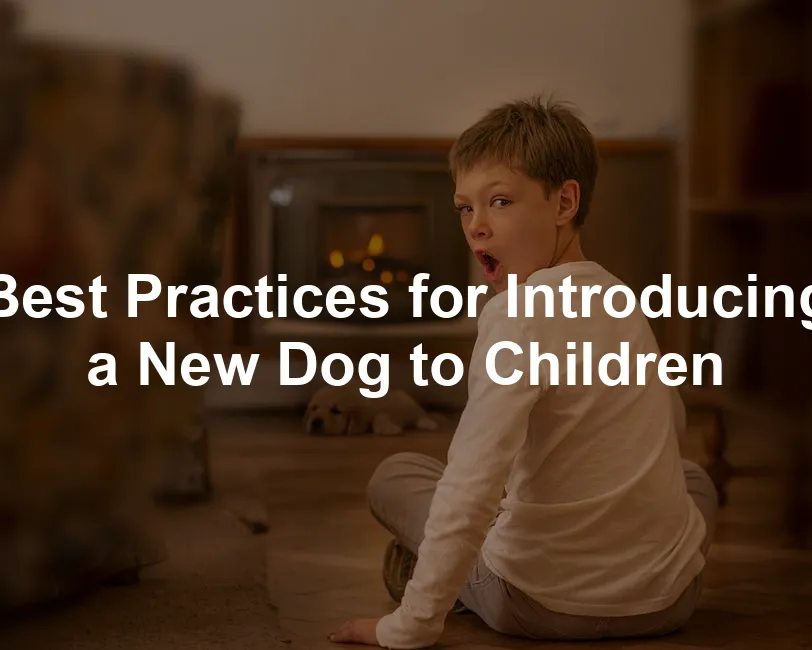Introduction
Bringing a new dog into your home is like adding a new member to the family. Excitement fills the air as kids dream of playdates in the yard and cuddly nap times. But wait! Before we dive headfirst into the puppy love, we must ensure a smooth introduction to the little humans. A harmonious bond between dogs and children can lead to laughter-filled days and lifelong friendships. However, without some careful planning, things could take a turn for the chaotic. Establishing best practices is vital for the safety and comfort of both your new furry friend and your children. By following a few key steps, you can set the stage for a relationship built on trust and respect. Let’s embark on this joyful adventure of welcoming a dog into your family, armed with knowledge and a sprinkle of patience!
To kickstart this journey, consider using a Dog Training Clicker. This nifty tool can help reinforce commands, making the training process smoother and more fun. Plus, it’s a great way to reward your pup for good behavior, which is a win-win for everyone!

Understanding Dog Behavior
Assessing the Dog’s Temperament
Before introducing your new dog to the kids, it’s essential to assess their temperament. Observe how the dog interacts with people, especially children. Look for signs of comfort, such as a wagging tail, relaxed ears, and a playful stance. If the dog shows interest in the kids, great! But if they seem indifferent or anxious, you might need to rethink the introduction. Introductions should never be rushed. Start with the dog on a leash, observing how they react. If the dog approaches the children willingly, that’s a promising sign. Remember, it’s all about making the dog feel secure.
Importance of Dog Training
Basic training is crucial for a smooth introduction. Commands like “sit,” “stay,” and “leave it” can help control the situation. A well-trained dog is less likely to jump or get overly excited. If you’re unsure how to start, consider consulting a professional trainer. They can offer tips tailored to your dog’s behavior. Remember, a little training goes a long way in fostering a positive relationship between your new dog and your kids. With some groundwork laid, you’ll pave the way for a calm and enjoyable introduction.
To help you in this journey, a Dog Training Book can be an invaluable resource. It provides insights and techniques that can make the training process enjoyable for both your dog and the kids!
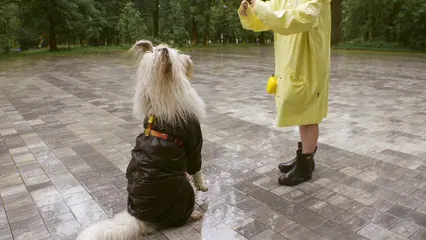
Preparing for the Introduction
Educating Your Children
Before your new furry friend arrives, it’s time for a little family education. Teaching kids how to behave around dogs is crucial. After all, dogs are not plush toys; they have feelings, too! Explain that gentle hands and calm voices are the way to go. Kids should learn about dog body language, such as wagging tails and relaxed ears. These signals indicate when a dog is happy or stressed.
For younger children, simple lessons work best. Use fun visuals to show how to pet a dog gently on the side instead of reaching over its head. Older kids can handle more sophisticated lessons. Teach them about boundaries, including when to give the dog space. Make it a fun challenge! Encourage them to spot the dog’s signs of comfort or discomfort. Remember, knowledge leads to respect, and respect fosters a fantastic bond.

To enhance this learning experience, consider picking up some Dog Treats Training Reward. These can be used to reward good behavior during the training process, making the lessons even more engaging for the kids!
Creating a Safe Environment
A peaceful environment makes for a successful introduction. Start by designating a safe area for your dog. This could be a cozy crate or a quiet corner with their favorite blanket. Make it clear to your children that this is the dog’s personal space. Dogs need a retreat to feel secure, especially when the excitement levels rise.
Next, ensure the home is calm before the introduction. Avoid loud noises and sudden movements. This helps the dog feel more at ease. When it’s time for the big meeting, keep a leash handy. This allows you to maintain control while the dog explores.
Remember to supervise all interactions. Kids can be overly enthusiastic, which can overwhelm a new dog. Teach them to approach slowly and allow the dog to come to them. It’s all about creating a comfortable atmosphere for everyone involved. A little preparation goes a long way in ensuring a smooth start for your new family member.
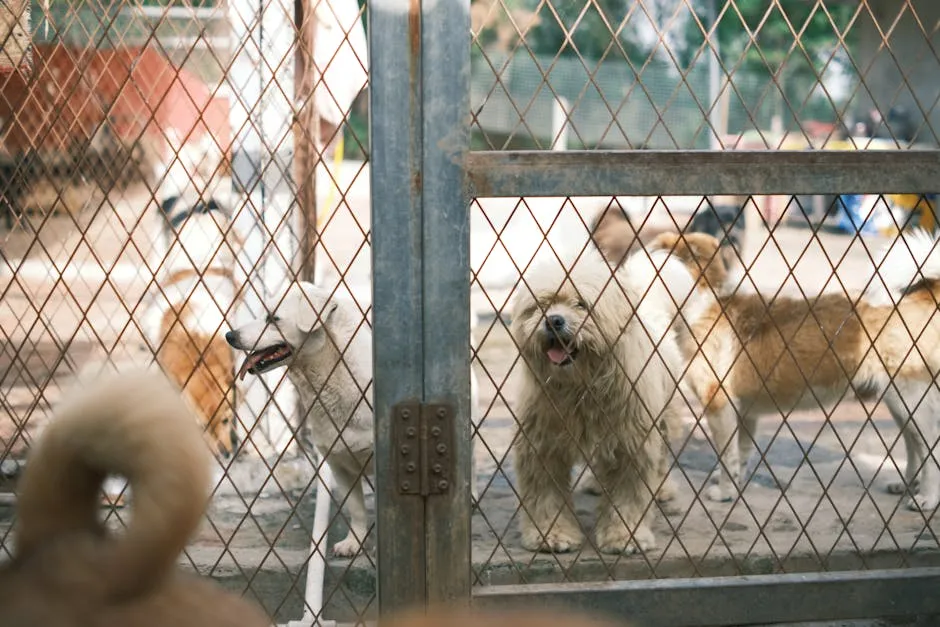
Speaking of comfort, a Dog Bed for Comfort is essential for your new pup. A cozy spot can help them relax and feel secure in their new environment.
Step-by-Step Introduction Process
Initial Meeting
The moment has arrived! It’s time for the first introduction between your kids and the new dog. Set the stage for success: keep the dog on a leash and maintain a calm demeanor. Remember, excitement can be contagious, but it can also overwhelm.
Encourage your kids to sit quietly and let the dog approach them. This allows the dog to feel in control, which is essential for building trust. If the dog seems hesitant, that’s okay! Patience is critical. Children should avoid rushing in or making sudden movements, as this can be startling.
To help ease the tension, have your kids offer treats while sitting down. This builds a positive association between the dog and children. Remind them not to stare directly into the dog’s eyes, as this can be perceived as a challenge. Instead, they can look down at the ground or at the dog’s paws.
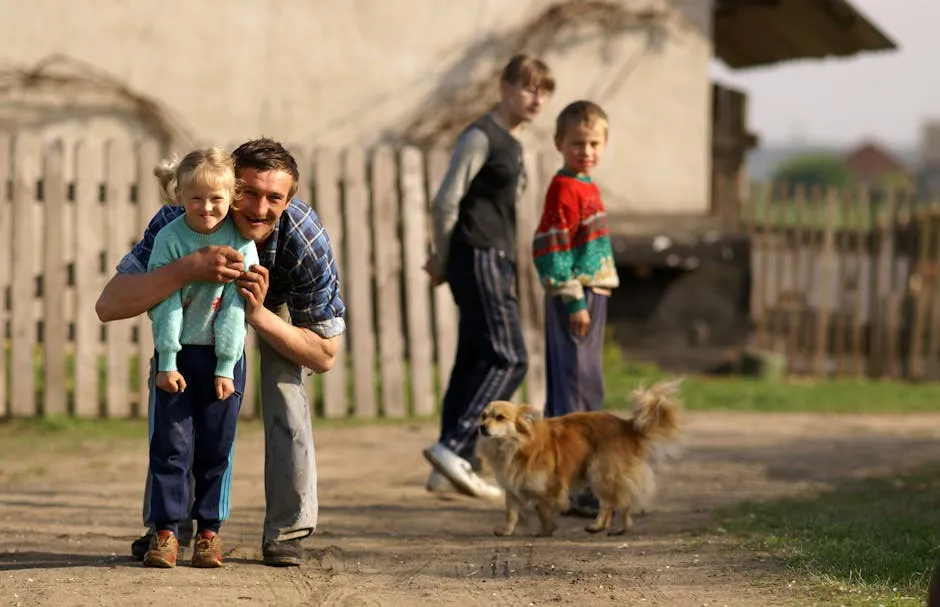
For added engagement, a Dog Treats Training Reward can be a great way to encourage the dog to come closer and build trust. Just remember to keep it fun and light-hearted!
If the dog responds positively, gently encourage your children to pet the dog. Use the “two-second rule”: they can pet the dog for two seconds and then stop. This gives the dog a chance to indicate if it wants more interaction. If the dog walks away, that’s a signal to give it some space.
Overall, keeping the initial meeting low-key will set the foundation for a lasting friendship. With patience and supervision, the bond will grow stronger each day.
Gentle Interaction Techniques
Introducing a new dog to children is a delightful adventure, but it comes with rules. First up, let’s talk about how kids should interact with their four-legged pals. Dogs might not appreciate a big hug, no matter how cute the kid is. Instead, children should approach gently. They can sit or kneel to avoid towering over the dog. This way, they won’t come off as intimidating creatures from a sci-fi flick.
Teach kids to keep their hands at the dog’s side, not above its head. Dogs often feel safer when they can see your hands. Remember, the goal is to make the dog feel comfy and secure. Encourage children to pet the dog gently on its side or back, avoiding any swift movements.
Now, here’s a fun tip: the “two-second rule.” This means kids can pet the dog for just two seconds, then stop. Wait for the dog’s reaction. If the pup leans in for more, then great! If not, that’s cool too—give the pooch some space. This helps children learn to respect the dog’s comfort zone and avoid pushing boundaries.

Supervision and Boundaries
When introducing a new dog to kids, adult supervision is a must! Think of it as being the referee in a game. Kids can get excited, and excitement can lead to chaos. So, ensure that an adult is always present during interactions. This helps prevent any mishaps and keeps the atmosphere calm.
Setting clear boundaries is crucial. Teach children not to disturb the dog while it’s eating or sleeping. Dogs need their me-time just like humans do! If a child approaches a dog in these situations, it could lead to stress or defensive behavior. Establishing these boundaries early will create a safer environment for both the dog and the kids.
Additionally, explain that dogs don’t like being hugged or chased—these behaviors can be overwhelming. Instead, kids can engage the dog in playtime by tossing toys or treats. This way, the dog sees children as friends, not foes. Keeping interactions positive and supervised will ensure a harmonious household, where kids and dogs can thrive together.

Speaking of playtime, consider getting some Interactive Dog Toys to keep your new furry friend entertained. These toys can stimulate your pup mentally and physically, ensuring they stay happy and healthy!
Positive Reinforcement
Positive reinforcement is a game changer in training dogs and building trust. Think of it as creating a win-win situation. When your dog behaves calmly around children, reward them with treats or praise. This encourages the same behavior in the future. It’s like giving them a gold star for good behavior!
Children can also benefit from positive reinforcement. When kids approach the dog gently or respect its space, a simple “Great job!” or a high-five can reinforce that behavior. Both parties learn to appreciate each other’s boundaries. For example, if your child sits calmly and the dog approaches, giving treats to both can create a bond of trust.
Remember, the key is consistency. The more you reward calm interactions, the more they’ll happen. This approach transforms introductions into joyful experiences rather than stressful encounters.

Gradual Exposure
Gradual exposure is crucial when introducing your new dog to children. Think of it as a slow dance rather than a wild party. Start with short, supervised interactions, allowing everyone time to adjust. This gentle approach sets the stage for a lasting friendship.
Incorporate bonding activities like short walks, where the dog can explore the world together with your children. Playing fetch in the backyard is another excellent way to promote familiarity. Kids can toss the ball while the dog retrieves it, fostering teamwork.
Engaging in these activities helps both children and dogs feel comfortable. Over time, they’ll learn to trust one another, leading to a harmonious relationship. Just remember: patience is key! With gradual exposure, both your dog and kids will feel more secure and connected.
Addressing Common Concerns
Handling Fear or Aggression
Introducing a new dog to children can bring surprises, especially if your pup shows signs of fear or aggression. The first step is to identify these signals. A dog might growl, back away, or even avoid eye contact. These behaviors are their way of saying, “I need space.” It’s vital to respect those cues.
If you notice fear, don’t tighten the leash or force the dog closer. Instead, create distance. Encourage your child to remain calm and quiet. This can help ease the dog’s anxiety. Offer treats from a distance to help the dog associate children with positive experiences.
In cases of aggression, it’s essential to separate the dog from the situation. Consult a professional trainer to address these behaviors. Learning to read body language is crucial. For instance, a wagging tail doesn’t always mean a happy dog; it can also indicate excitement or agitation. Teach your kids to observe and interpret these signals correctly.

To ensure safety during these interactions, consider having a Dog First Aid Kit on hand. Accidents happen, and being prepared can make all the difference!
By understanding your dog’s body language, you can prevent escalation and ensure safe interactions. Remember, a calm approach fosters a safe environment for both your new dog and your children.
Teaching Kids About Dog Behavior
Understanding dog behavior is essential for a smooth introduction. Teaching children to recognize signs of discomfort or stress in dogs is crucial. For instance, a dog may show its unease by tucking its tail, avoiding eye contact, or panting excessively. These signals indicate that the dog needs space or time to adjust.
Encouraging children to observe these signs fosters empathy. It helps them appreciate that dogs, like humans, have feelings. Explain that when a dog growls or backs away, it’s not being mean—it’s simply uncomfortable. Teach kids to respect the dog’s boundaries. If the dog retreats, they should give it some space.
Examples of appropriate behaviors include gentle petting and calm voices. Children should avoid sudden movements or loud noises. Instead of hugging, they can offer a hand for the dog to sniff. This approach encourages a positive interaction.
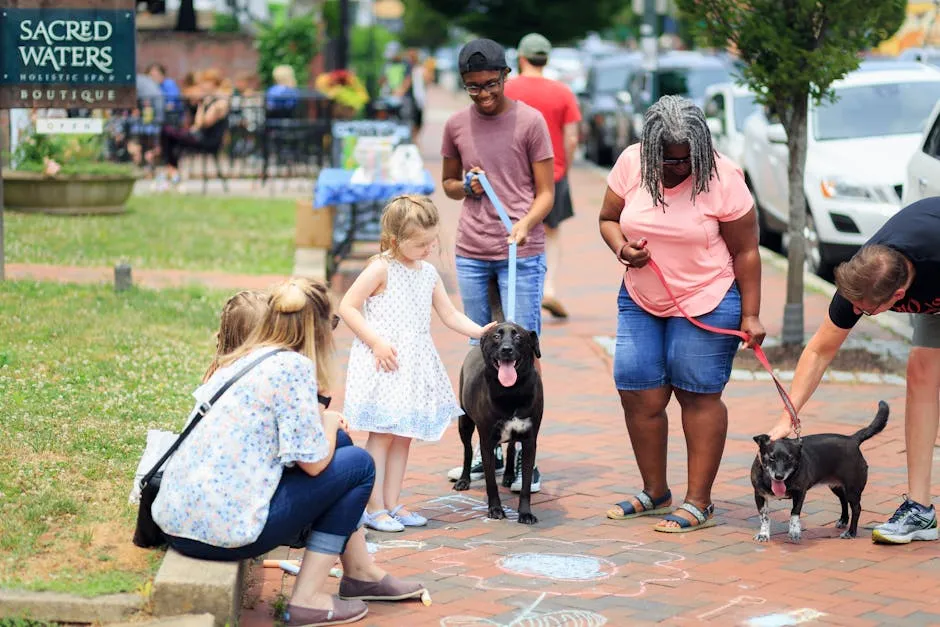
For a fun and educational experience, you might want to check out a Children’s Book about Dogs. These books can provide fun stories while teaching kids about dog care and behavior!
By emphasizing these principles, children learn to interact safely and kindly with their new furry friend. Understanding dog behavior lays the foundation for a loving, respectful relationship. This education not only protects the dog but also enhances the joy of a harmonious family life with pets.
Conclusion
Introducing a new dog to children can be a delightful experience, but it requires patience and careful planning. Start by teaching your kids how to behave around dogs. This includes recognizing signs of discomfort and understanding appropriate interactions. Creating a calm environment and preparing both the dog and children ensures a smoother transition.
Always supervise interactions, setting clear boundaries to protect both parties. Encourage gentle handling and respect for the dog’s personal space. Foster responsibility by involving kids in caring for the dog, from feeding to training. Positive experiences will solidify their bond over time.
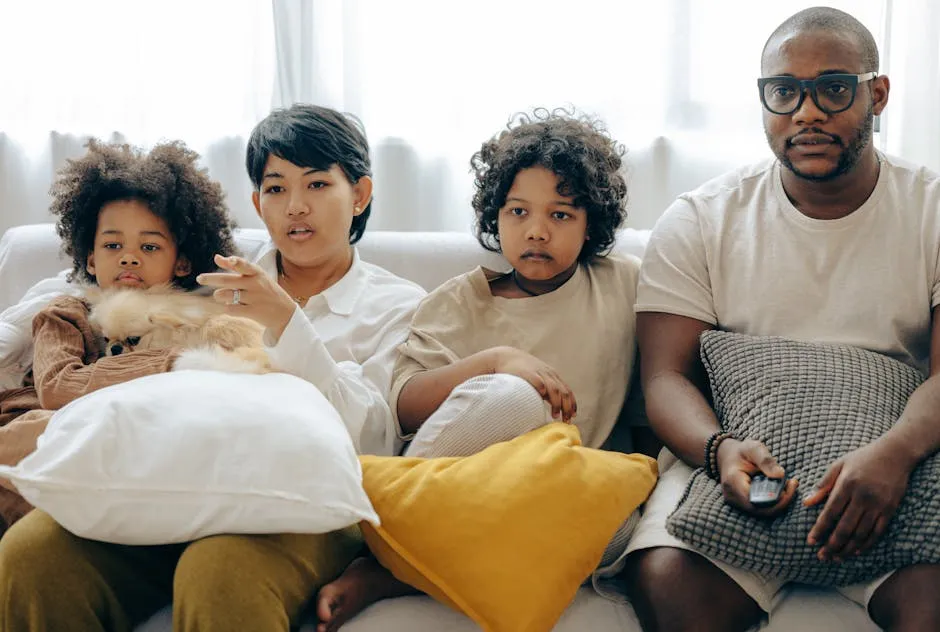
Don’t forget the essentials! A Dog Crate for Safe Space can be a great tool for providing your new dog with a secure and cozy environment to retreat to when they need some alone time.
Remember, every dog is unique, and each introduction will unfold differently. Stay observant and proactive, addressing any concerns swiftly. By prioritizing safety and comfort, you pave the way for a joyful family dynamic. Embrace this exciting journey; you’re not just adding a pet to your family but a new friend for your children!
FAQs
What if my new dog doesn’t like my kids?
If your new dog seems hesitant or fearful around children, take it slow. Begin with short, supervised interactions. Allow the dog to approach the kids on its own terms. Encourage children to sit quietly and drop treats to create positive associations. If the dog shows signs of anxiety, don’t force interactions. Instead, provide a safe space where it can retreat. If issues persist, consider consulting a professional trainer for tailored advice.
How long should I supervise interactions?
During the initial introduction phase, supervision should be constant. For the first few weeks, keep a close eye on all interactions. This ensures both the dog and children feel safe. As they grow more comfortable with each other, you can gradually increase the time they spend together. Always be prepared to step in if you notice any signs of discomfort or stress.
Are certain dog breeds better for families with children?
Yes, some breeds are generally more suited for families with children. Breeds like Labrador Retrievers, Golden Retrievers, and Beagles are known for their friendly and gentle nature. However, individual temperament is crucial. Consider the specific dog’s behavior and training history. Additionally, some breeds may require more supervision and training, so choose based on your family’s lifestyle and the dog’s needs.
What should I do if the introduction doesn’t go as planned?
If the introduction doesn’t unfold as expected, stay calm. Separate the dog and children immediately if any aggressive behavior occurs. Observe the dog’s body language to understand its feelings. It may be helpful to consult a professional trainer or behaviorist for guidance. They can provide strategies to improve interactions and help build trust between your dog and children. Always prioritize safety and take the necessary steps to foster a positive relationship.
Teaching your dog effective behaviors through training can be enhanced by utilizing effective positive reinforcement techniques for stubborn dogs.
Please let us know what you think about our content by leaving a comment down below!
Thank you for reading till here 🙂
All images from Pexels

